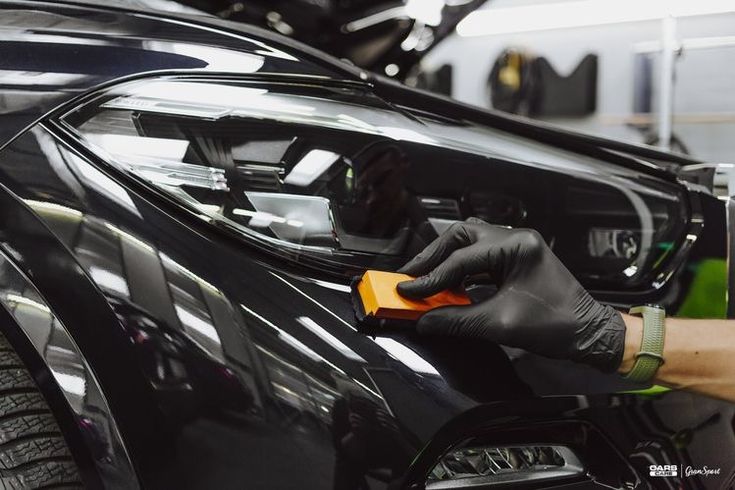Your vehicle is more than just a mode of transportation—it’s a statement, a reflection of your personality and taste. But with every drive, it faces the harsh realities of the road: dirt, debris, and even those pesky insects that seem to be magnetically attracted to your pristine paint job. Enter crystal clear Paint Protection Film (PPF), an innovative solution designed to keep your car looking its best while safeguarding its surface from damage.
Imagine cruising down the highway with peace of mind, knowing that your ride is shielded against scratches and environmental threats. Whether you’re driving through city streets or winding country roads, PPF acts as an invisible barrier between your vehicle’s exterior and everything else out there vying for attention. Let’s dive deeper into what PPF is all about and explore why it’s becoming an essential addition for car enthusiasts everywhere.
Understanding Paint Protection Film (PPF)
Paint Protection Film (PPF) is a transparent, durable layer designed to protect your vehicle’s paintwork. Made from advanced polymer materials, it’s engineered to withstand the rigors of daily driving.
This film acts as a shield against scratches, chips, and other forms of damage caused by road debris. It’s like giving your car an invisible armor that keeps its exterior looking fresh and new.
What sets Ppf apart is its self-healing properties. Minor scratches can disappear over time when exposed to heat or sunlight, making maintenance easier than ever.
Applying PPF doesn’t change the aesthetics of your vehicle; it enhances them while providing protection. The clarity ensures that the color and shine remain untouched beneath the film.
For anyone looking to preserve their investment in a vehicle’s appearance, understanding PPF opens up new possibilities for long-term care and durability.
The Benefits of Using PPF on Your Vehicle
Paint Protection Film (PPF) offers a robust shield for your vehicle’s exterior. It acts as a barrier against scratches, chips, and stains from road debris. This helps maintain that showroom shine.
UV rays can fade your car’s paint over time. PPF provides an effective defense against these harmful rays, preserving the vibrancy of your color.
In addition to physical protection, it enhances resale value. A well-maintained exterior can attract potential buyers when it’s time to sell or trade in your vehicle.
One of the standout features is self-healing technology. Minor scratches disappear with heat exposure, keeping your car looking fresh without much effort.
Another advantage is its transparency. PPF won’t alter the appearance of your vehicle while offering all these protective benefits—a perfect blend of aesthetics and practicality for any car lover!
Types of PPF and How to Choose the Right One for Your Vehicle
When selecting paint protection film (PPF), understanding the various types available is crucial. There are generally two main categories: self-healing and non-self-healing films. Self-healing PPF has a unique top layer that can repair minor scratches over time, keeping your vehicle looking immaculate.
Non-self-healing options are typically more affordable but may require frequent maintenance and replacement if they become damaged.
Additionally, consider thickness; thicker films often offer better protection against chips and abrasions. The finish also matters—glossy for a shiny look or matte for a sleek vibe.
Compatibility with your vehicle’s color is another important factor. Some films enhance specific shades while remaining invisible on others. Always evaluate your driving habits too; those frequently on rugged roads might benefit from stronger options to withstand wear and tear effectively.
DIY vs Professional Installation: Pros and Cons
When considering paint protection film (PPF), the installation method is crucial. DIY installation offers a sense of accomplishment. You can save on labor costs and customize your approach.
However, it comes with challenges. Achieving a flawless finish requires skill and patience. Mistakes may lead to bubbles or uneven edges, compromising the film’s effectiveness.
On the other hand, professional installation guarantees quality results. Experienced technicians know how to handle various surfaces and ensure proper adhesion.
The downside? Professional services can be costly. If you’re on a tight budget, this might not be an option for you.
Weighing these options depends on your comfort level with hands-on projects versus investing in expert help for peace of mind and superior application.
Proper Care and Maintenance of PPF
Proper care and maintenance of Paint Protection Film (PPF) can significantly extend its lifespan and keep your vehicle looking pristine. First, it’s essential to wash your car regularly but gently. Use a pH-balanced car shampoo and avoid abrasive materials that could scratch the film.
When drying your vehicle, opt for a soft microfiber towel rather than an old rag or chamois. This helps prevent any potential damage to the PPF surface. If you’re using automatic car washes, choose touchless options to minimize contact with brushes that might harm the film.
In addition, be cautious when applying wax or other protective coatings over PPF. Not all products are compatible with paint protection films; some may even cause cloudiness or discoloration over time. Always check product labels before application.
For those who live in areas with harsh weather conditions, consider regular inspections for wear and tear on the film. Addressing small issues early can help prevent larger problems later on.
Following these simple guidelines will ensure that your paint protection film remains effective while enhancing the beauty of your vehicle’s exterior for years to come. Taking proactive steps in care means more time enjoying driving without worrying about unsightly scratches or blemishes.
















